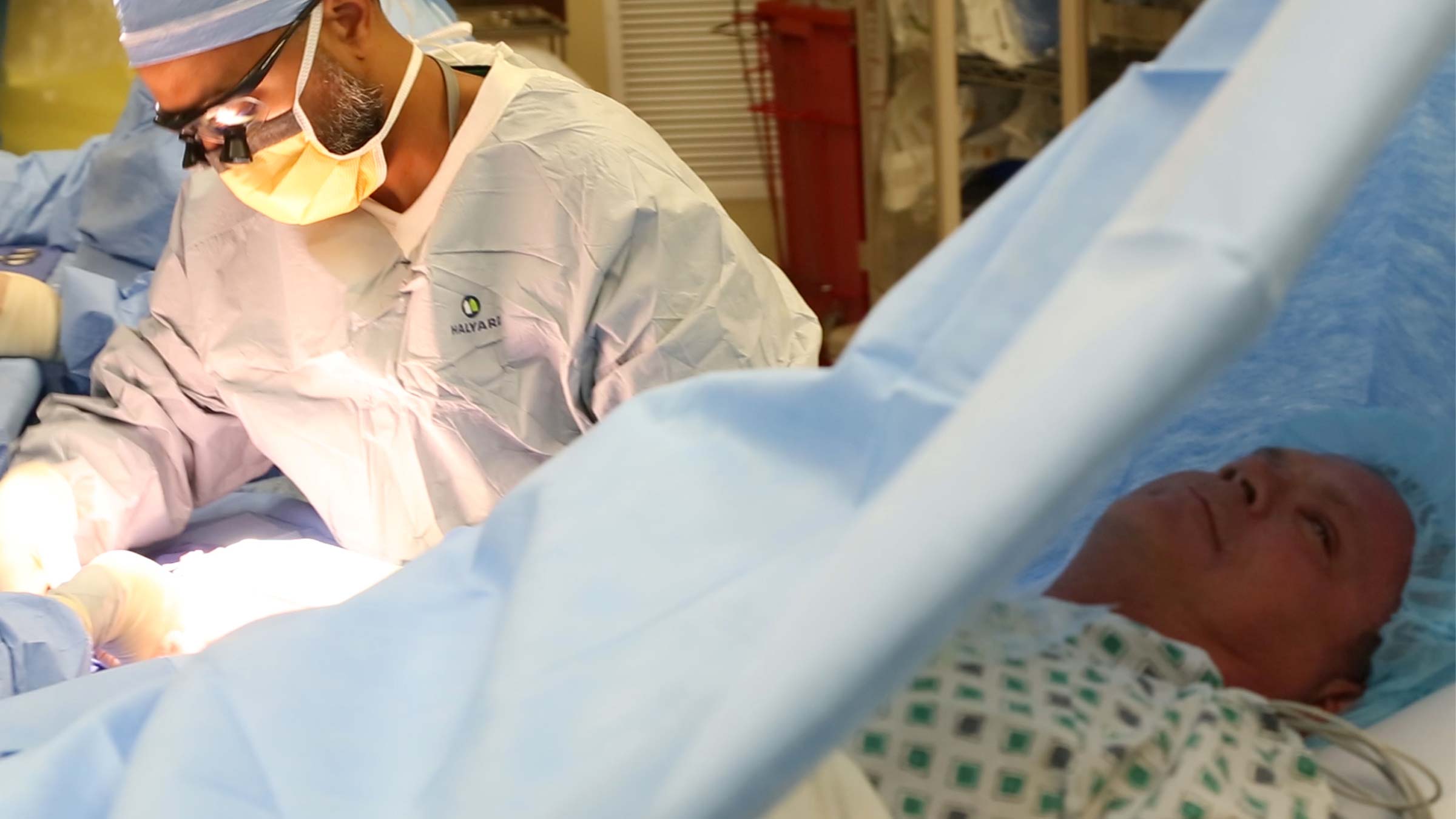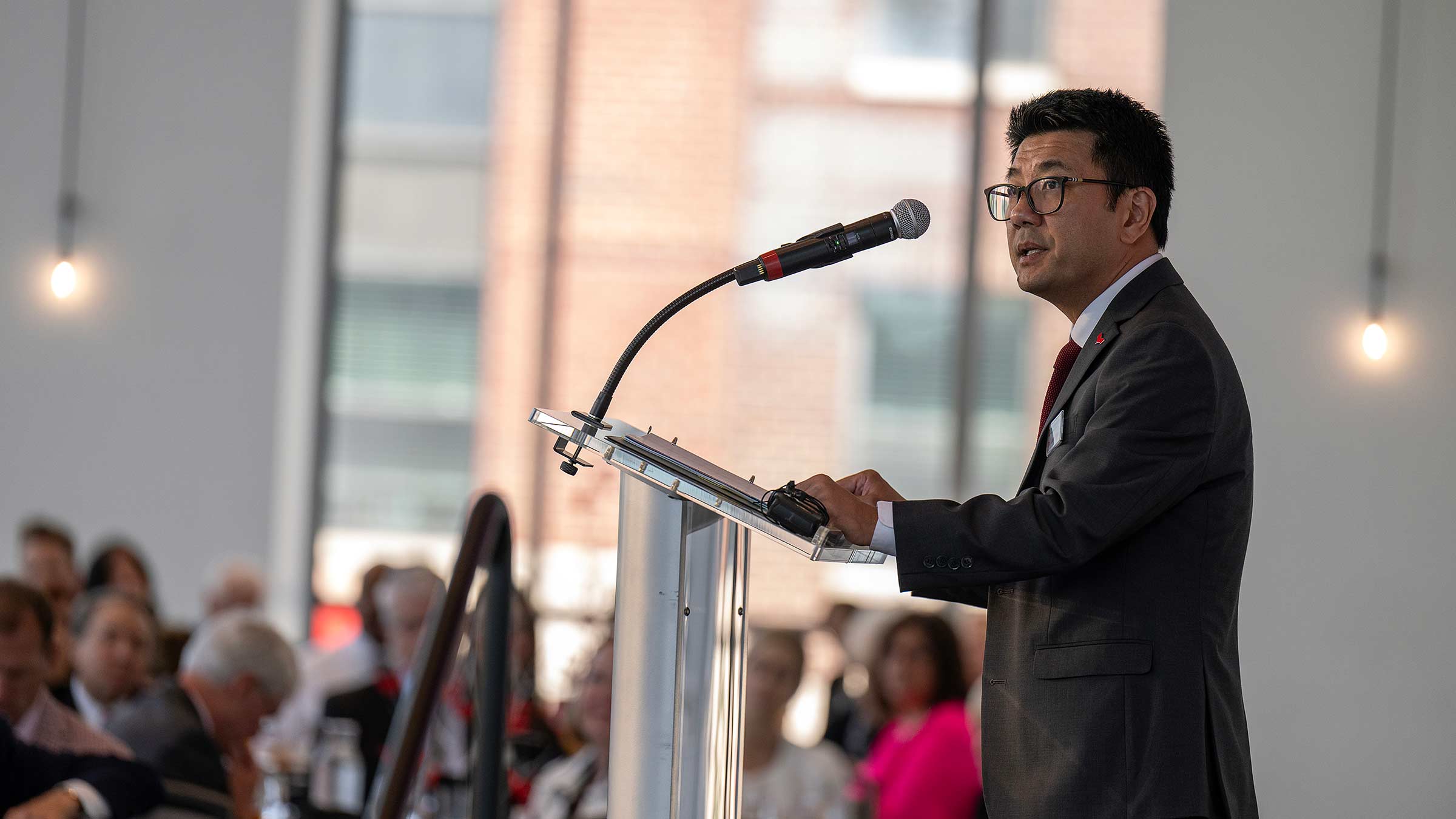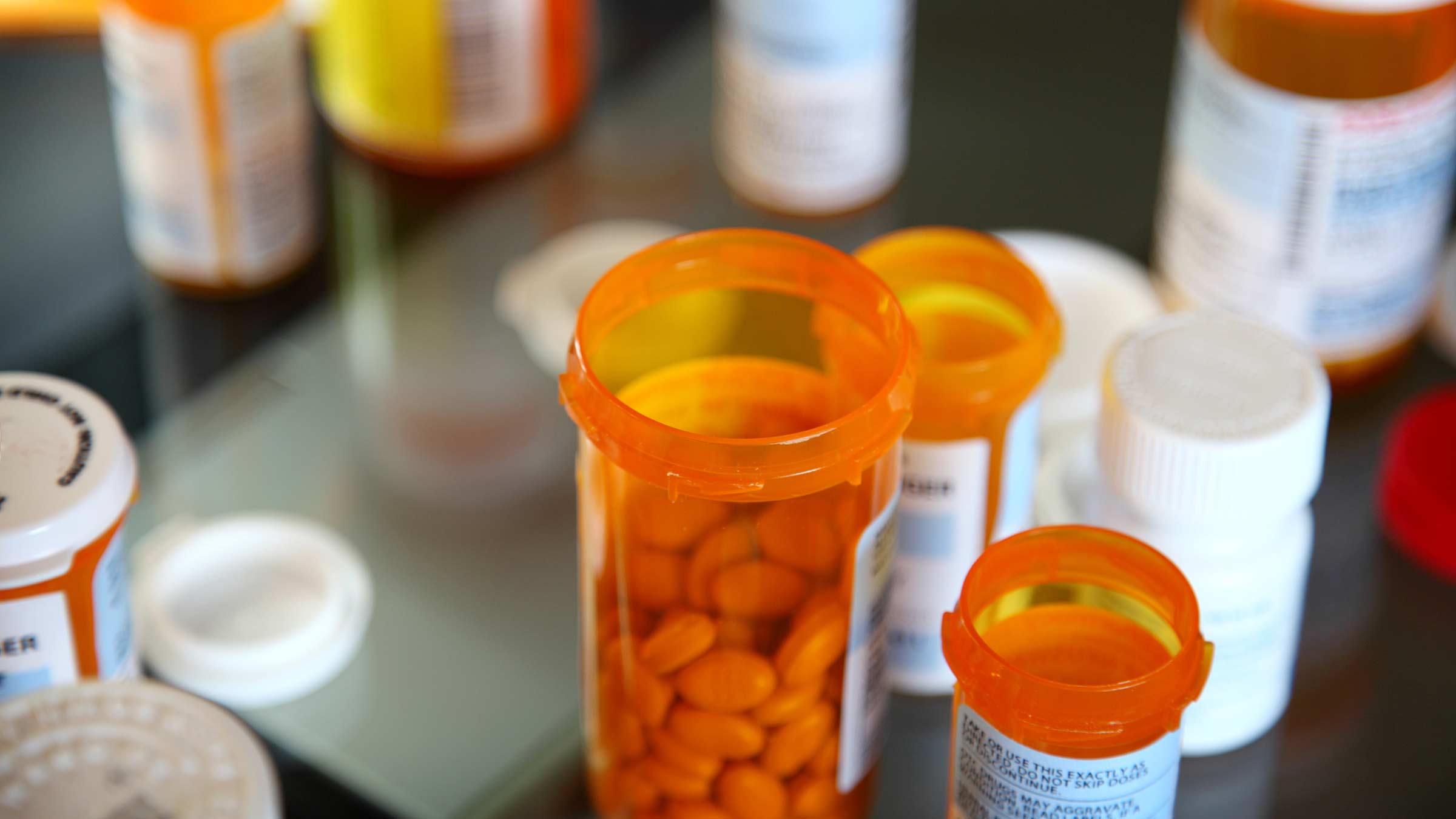
Photo caption: Orthopedic hand surgeon Kanu Goyal, MD, performs a WALANT (wide-awake, local anesthesia, no tourniquet) procedure, one of many strategies The Ohio State University Wexner Medical Center uses to limit reliance on opioids during and after surgery while shortening recovery times and decreasing the risk of anesthesia side effects.
In the last two decades, the number of drug-involved overdose deaths has ballooned, according to the Centers for Disease Control and Prevention (CDC). Many of those overdoses can be attributed to opioids.
Unfortunately, some who developed opioid use disorder began taking opioid medication because their health care provider prescribed it as effective pain relief after surgery.
“Opioid use disorder (OUD) develops only after exposure to opioids, and we often see patients who were initially prescribed opioids for an injury or surgery, then go on to develop OUD,” says Julie Teater, MD, medical director for Addiction Medicine at The Ohio State University Wexner Medical Center.
That’s why many health care organizations, including the Ohio State Wexner Medical Center, are now committed to reducing opioid prescriptions and using pain relief methods that are less likely to create addiction.
“We know that risk factors include genetic factors, environmental factors and individual factors, and patients often have vulnerabilities for OUD and don’t know it,” Teater says. “For example, about 50% of the risk for developing OUD is genetic, but a person might not be aware of their genetic predisposition.”
By decreasing exposure to opioids, Teater says, health care providers decrease patients’ risk of developing OUD.
Here’s what these new opioid reduction methods mean for patients who need pain relief after surgery:
You’ll likely go home with fewer opioid pills, if any
Providers will do their best to prescribe just enough medication to manage pain effectively, says Michelle Humeidan, MD, medical director of Enhanced Surgical Recovery (ESR) at the Ohio State Wexner Medical Center.
“Our cornerstone goal in starting the ESR protocol at Ohio State in 2016 was to reduce the need for opioids after surgery,” Humeidan says.
Ohio State’s Toward Opioid-Free Ambulatory Surgery (TOFAS), a study currently investigating the effectiveness of pain management without opioids for same-day or ambulatory surgery patients, has found that prescribed opioids often weren’t needed.
The study found that, in patients undergoing hernia surgery who are discharged the day of the procedure, more than half of the opioid prescriptions weren’t being used. It creates an opportunity for addiction, whether it’s the patient continuing to use opioid medication beyond what they need, or someone else in their household or community accessing that person’s prescribed medication.
“Many patients are able to adequately manage pain after surgery with acetaminophen (Tylenol), ibuprofen or other non-opiate options,” Humeidan says, “with the option of a low-dose opioid for pain spikes.”
Certain procedures are more likely to have reduced opiate use during and after surgery
Ohio State’s ESR surgical protocols first began with microvascular breast reconstruction surgeries, and its success has been duplicated in steadily more surgeries since — including colorectal surgery, cystectomy, esophagectomy, gynecologic oncology surgery, head and neck oncology surgery, abdominal wall reconstruction and complex hernia repair, minimally invasive thoracic lobectomy, total joint arthroplasty, Whipple procedures (pancreaticoduodenectomy), bariatric surgery and outpatient thyroidectomy.
The surgical protocols will soon be expanded to sarcoma surgery, caesarean sections, orthopedic trauma surgery and lumpectomy and mastectomy breast surgery.
Pain relief might be more localized
Through ESR, opioids are replaced with non-narcotic pain medicine before surgery, and long-acting narcotics are avoided in the operating room. Surgeons in many procedures will place infusions of local anesthetic near incision sites to numb the area following surgery, instead of using a pain medication that’s administered throughout the entire body. Patients who are candidates for nerve blocks for pain control can receive them from the anesthesiologist or acute pain team.
Your length of hospital stay could be shorter
Your health care providers’ goal is not to get you home before you’re ready to safely leave the hospital. Shorter hospital stays, in this case, demonstrate that patients are able to recover more quickly, getting them back into their comfortable home sooner — and likely saving them money. The average length of stay for some of these procedures has been significantly shortened since adopting ESR protocols.
Your recovery may be easier
“We are getting patients recovered faster and able to go home more quickly,” Humeidan says. “And we are seeing that surgical complications are consistently down across all procedures with ESR protocols.”
According to Ohio State’s most recent data on its ESR protocols, opiate use in patients in the hospital (inpatients) has dropped 65% since adopting ESR. Opiates used between the day of hospital discharge and 30 days after discharge has decreased by 63% as health care providers successfully guide patients in managing their pain with non-narcotic pain medication and alternative pain relief.
It represents progress and safer methods for all, reducing the potential for opioid addiction in our community, improving overall safety and recovery and lowering costs for all.

When you give to The Ohio State University Wexner Medical Center, you’re helping improve lives
We’re committed to making advancements in research, education and patient care that will have an impact throughout Ohio and the world.
Ways to Give





